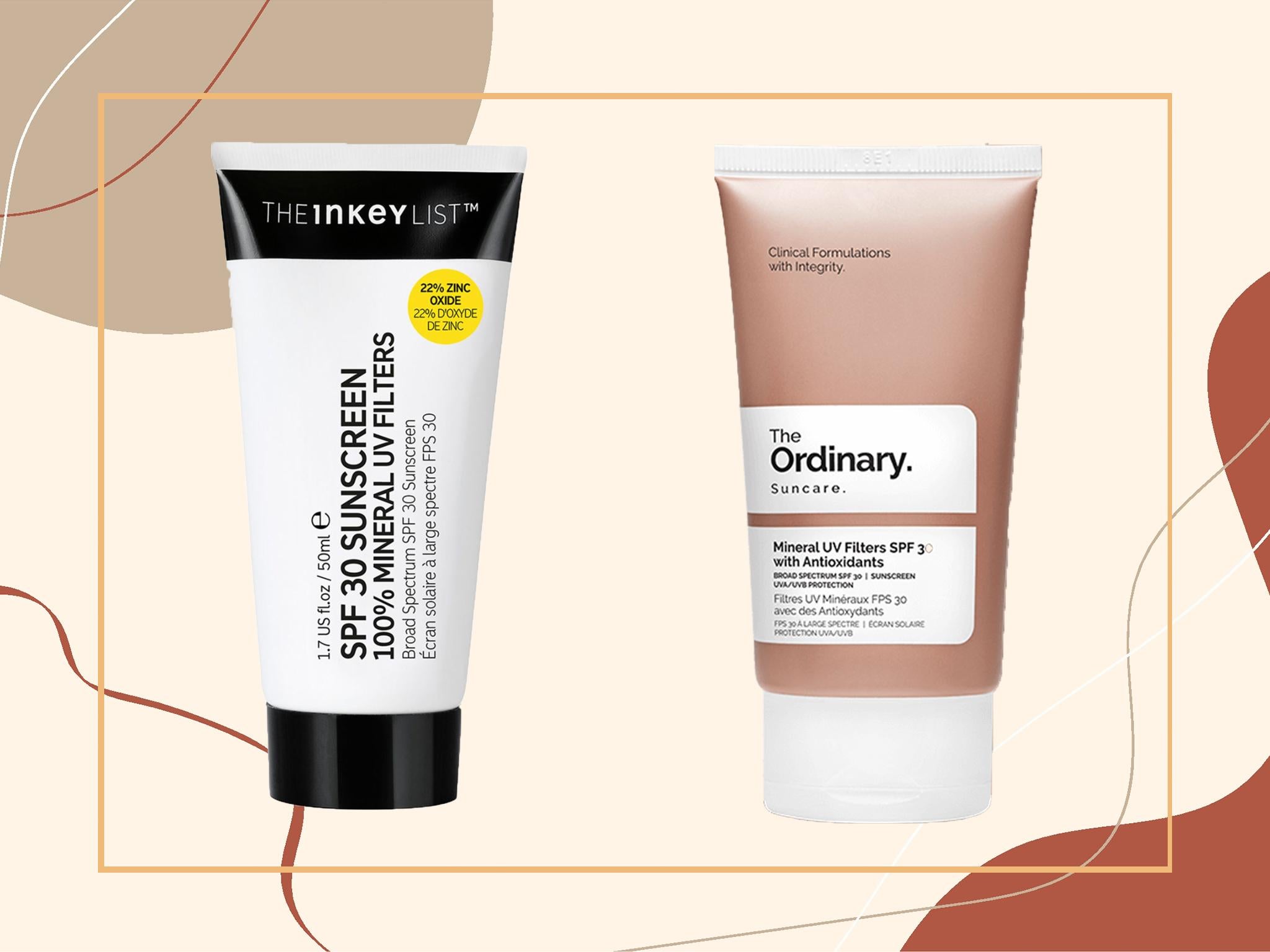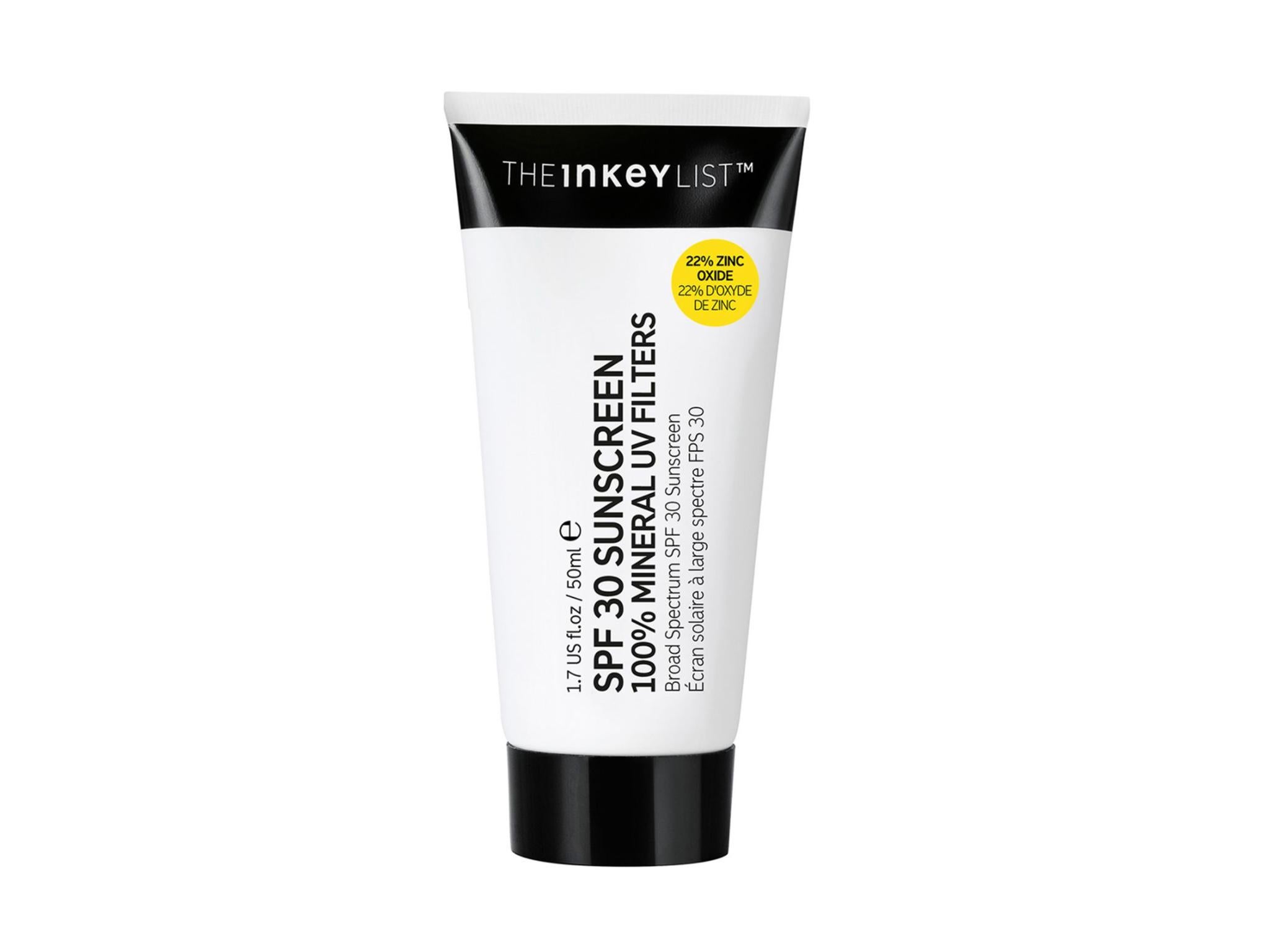The Independent's journalism is supported by our readers. When you purchase through links on our site, we may earn commission. Why trust us?
The Ordinary vs The Inkey List: Which SPF is best?
Both buys are under £15 and have an SPF of 30, but which formula won us over? We put them head to head

Your support helps us to tell the story
From reproductive rights to climate change to Big Tech, The Independent is on the ground when the story is developing. Whether it's investigating the financials of Elon Musk's pro-Trump PAC or producing our latest documentary, 'The A Word', which shines a light on the American women fighting for reproductive rights, we know how important it is to parse out the facts from the messaging.
At such a critical moment in US history, we need reporters on the ground. Your donation allows us to keep sending journalists to speak to both sides of the story.
The Independent is trusted by Americans across the entire political spectrum. And unlike many other quality news outlets, we choose not to lock Americans out of our reporting and analysis with paywalls. We believe quality journalism should be available to everyone, paid for by those who can afford it.
Your support makes all the difference.Since its launch in 2016, budget skincare brand The Ordinary has become one of the beauty industry’s biggest disruptors thanks to its inexpensive and effective skincare products that rival luxury competitors with price tags ten times the price.
From cleansers to serums, moisturisers and primers, the line-up is ever-expanding and ingredient-led, from the cult favourite AHA 30% + BHA 2% peeling solution to its hyaluronic acid 2% + B5.
Until 2018, The Ordinary arguably had no direct competition, even other budget-friendly beauty brands couldn’t compete with its huge following. That is, until a new kid on the block, The Inkey List, arrived.
With similar price points – nothing in the range is over £15 – it strives to cut through beauty jargon and simplify skincare, so consumers can identify what ingredients and products they need for their skin type.
When it first launched with a line-up of 15 products, its skincare was packed with hero ingredients such as retinol, hyaluronic acid and vitamin C. But it has since expanded into haircare with a scalp care range earlier this year, and its most recent product is a £14.99 sunscreen.
It’s no secret that SPF should be used daily and is imperative to protecting skin from UV rays and hyperpigmentation, along with being the best preventative measure for fine lines and wrinkles.
So we decided to put the new launch through its paces by comparing it to The Ordinary's SPF 30, which costs just £8.90.
As well as offering the same sun protection at similar price points, they are both mineral sunscreens too, which means they contain zinc oxide. This creates a barrier on the skin's surface and block UV rays from penetrating the skin.
The downside to this ingredient is that it can cause the dreaded white cast associated with many sunscreens, and is typically a thicker consistency.
We’ve looked at texture, application, claims and the impact on skin to find out which one is worth your time and money.
You can trust our independent reviews. We may earn commission from some of the retailers, but we never allow this to influence selections. This revenue helps us to fund journalism across The Independent.
The Ordinary mineral UV filters SPF 30 with antioxidants: £8.90 for 50ml, Deciem

It was difficult not to have high hopes for this, as The Ordinary has such a strong reputation for products that work while dismissing the idea that good skincare requires spending a lot of money.
On first impressions, the box and 50ml tube are brown, which suggests it will offer a tint, however, the cream is an off-white colour.
The vegan formula is free from water, alcohol, oil, nuts, gluten and silicone but claims to provide sun protection, both short and long-term hydration and to calm stressed skin, all without clogging the pores.
The formula is quite thick and when first massaged into skin creates a ghostly white cast that we found turned our skin slightly grey, thanks to the zinc oxide.
After 15 seconds of massaging into the skin, little changed and it sat uncomfortably on our skin as we continued rubbing it in. We’d recommend applying this up to 20 minutes before you apply any make-up as it does change your skin tone quite dramatically at first.
Once rubbed in, we discovered it actually resulted in a redder face due to the extended facial massage, so if you already suffer from rosacea or are naturally flushed, it’d probably be best to steer clear.
When worn either with or without make-up on top, it left our skin feeling greasy and tacky to touch, which not only disrupted our base make-up products, but also didn’t feel particularly comfortable.
We didn’t feel a visible difference in hydration, but as this left a white cast even on our pale skin, anyone with a darker skin tone would also struggle to wear this.
That said, when worn during the heatwave on a lunchtime walk and evening trip to a beer garden, we didn’t experience any sunburn in heat that reached highs of 34C.
While it offers adequate protection, all in all, the formula and finish let us down, as it was an unenjoyable experience to wear.
The Inkey List SPF 30 daily sunscreen: £14.99 for 50ml, Cult Beauty

When lined up next to each other, the two sunscreens, aside from the packaging colour, are practically identical. Both are a mineral sunscreen with a broad spectrum SPF 30, in tube form. This means they protect from both UVA and UVB rays.
Packaging wise, The Inkey List's tube features a detailed blurb which details what order to layer your other skincare products with sunscreen and what the ingredients in it do. For example, it explains that shea butter moisturises and pollustop protects skin from pollutants and prevents premature skincare ageing.
While The Ordinary offers its list of ingredients and their purposes online, on the packaging it just details which chemicals are in the formula, leaving it up to the user to decipher.
Additionally, down one side of The Inkey List’s tube is a perforated edge, which when gently pulled apart, folds out, with an entire panel explaining what mineral sunscreen is on the inner, alongside what it can be paired with, such as hyaluronic acid if you need hydration, or bakuchiol for anti-ageing properties, as it’s a natural alternative to retinol.
As a result, before you even apply it, you’re already better informed, and it takes just a couple of minutes to read through. It’s a thoughtful touch that we appreciated, and true to form does cut through a lot of the beauty jargon surrounding skincare.
The texture is creamy but lightweight, and has a slight tint, which has been added to counteract any chalky residue that zinc oxide can leave.
The tint, however, blends into skin and leaves no trace so we predict it will be just as wearable for dark skin tones. It provides an ever-so-slight blurred finish, with a dewy, non-greasy end result that feels comfortable when worn with or without make-up. It didn't disrupt our foundation or other base products either and felt weightless on the skin.
The verdict: The Ordinary vs The Inkey List
Seeing as SPF is recommended to be worn daily, as a consumer it’s important your SPF slots into any skincare routine with ease, as the more discomfort it causes, the less likely you are to wear it.
Overall, The Ordinary did provide a broad spectrum protection from UVA and UVB rays, but the sticky, unblendable white cast it left on our skin made it a faff to apply and put us off wearing it.
The Inkey List, however, absorbed quickly into skin, leaving no trace. It worked well under make-up too, making it a no-brainer to add into our new morning routines.